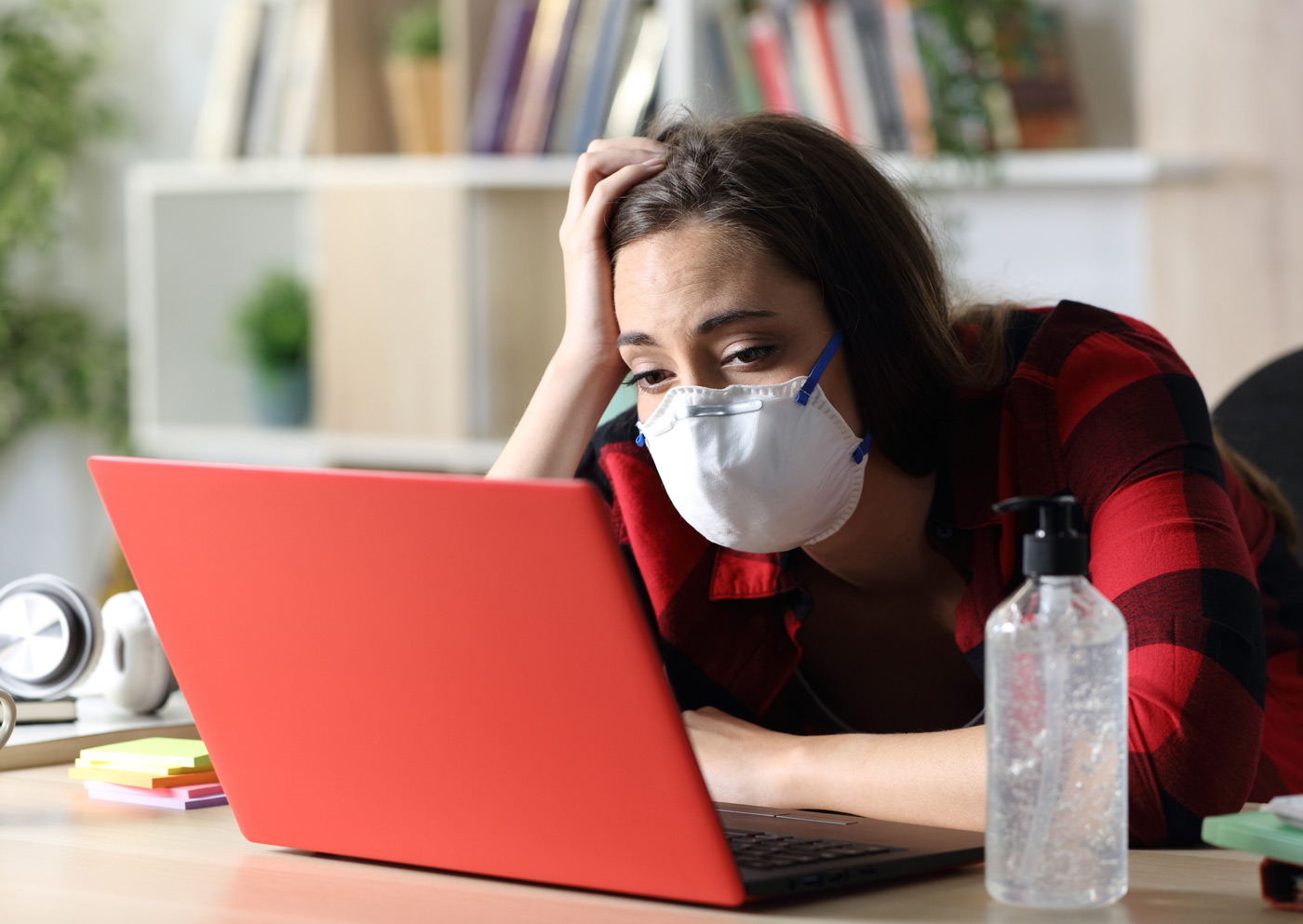Mending the Pandemic Brain
Brain fog, forgetfulness, or feeling down? The answer is in cognitive enrichment, reducing stress, and enhancing social connections.
Brain fog, forgetfulness, or feeling down? The answer is in cognitive enrichment, reducing stress, and enhancing social connections.

By Amalina Anuar
Covid-19 has not been kind to our brains. With distress, isolation, and prolonged boredom in the air thanks to successive lockdowns, cases of pandemic brain have been both prevalent and persistent.
Everywhere, significant chunks of the population are experiencing brain fog, trouble concentrating, and forgetfulness, among other things, that affect day-to-day functioning when it comes to work and beyond.
If there is a silver lining, however, it’s this: it is possible to reverse the effects of pandemic brain.
Stress and boredom impact our brains in a multitude of complex ways. The short of it though is that they can form a harmful cocktail for learning, memory, and general cognitive functioning. To give but one example, distress can destroy and suppress the growth and reorganisation of new neural connections in certain brain regions; meanwhile, a lack of stimulation and challenge can discourage the forging of new connections.
It stands to reason then that reducing stress — specifically negative stress, emphasises Harvard psychiatry professor Dr Kerry Ressler in the Harvard Health blog post Protect Your Brain from Stress — can significantly improve mental well-being, and research supports this. What’s more, according to Dr Rebecca Price, a Pittsburgh University psychiatry and behavioural science professor, in an article by MIT Technology Review: “If you create for yourself a more enriched environment where you have more possible inputs and interactions and stimuli, then [your brain] will respond to that.”
Implementing holistic mental health – the approach of treating the whole person, including mental and social factors, rather than just the symptoms of a disease – as described above requires a mix of self-care and community care in the workplace.
Self-care emphasises what individuals can do for themselves, for instance, wellness tips or mindfulness techniques. Yet, whether in the troughs of trauma or the pitfalls of pandemic brain, it can be difficult for individuals to recover from mental health problems alone. There are days when basic self-care feels impossible and not for lack of trying. In some ways, those suffering shouldn’t be going it solo.
Social connection and support are critical to recovery. Even the most introverted person is inherently, based on neurological make-up, a social creature. This may not mean desiring the same kinds of interaction as extroverts, but it does underscore how social connection has a place in life across the board. Social psychology research confirms that human well-being thrives on connection – both deep and meaningful relations as well as more casual, weak ties – and isolation is stressful.
As Dr James Coan, a University of Virginia psychology professor, elaborates in health and wellness blog, Elemental: “All else being equal, when we’re alone, our brain is a little more vigilant for any signs of danger. Also, our brain perceives demands from the world as more demanding than they would be if we had someone with us. And there’s a really simple reason for it; it’s that the world is more demanding when we’re alone, because anything that the world demands of us when we’re alone, we have to do by ourselves.”
Just as no one is an island, no one lives in a vacuum either. Managing stress and stimulation in the workplace is dependent on the cooperation of everyone in the workplace. Community care is thus important in this way because it emphasises what everyone can and should do for their immediate and wider social networks. It is about being there and caring for others in times of need, which runs the gamut from pitching in and lessening someone’s burden, to using one’s power or privilege to rectify deep-rooted organisational and systemic flaws, to actively co-creating work environments and cultures that contribute to improving overall well-being.

Here’s the latest research round-up of how leaders and teams can create an enriched, more stimulating environment to reverse pandemic brain:
> Intentional cognitive stimulation is needed in the era of work-from-home (WFH). Picking up a new skill or hobby is a great example of this. Encouraging colleagues in their learning, or perhaps learning together, is one way to engage in both novelty and social interaction. With upskilling riding up corporate agendas, leaders and teams have leveraged organisational resources such as Hong Leong Bank’s HLB@Workday, a mobile-first learning experience for employees delivering bite-sized learning content that is accessible 24/7.
> An enriched environment that allows for play is recommended. Games and puzzles are excellent resources for cognitive training, particularly when they are actively targeting memory and concentration. Integrating gamification into work projects and tasks could inject excitement into the workplace, but leaders and teams should proceed with caution as poorly designed games can lead to more frustration and stress.
> Stimulating environments involve presenting challenges to encourage growth. Leaders and teams could rely on the tried-and-tested methods of switching up mentorships and rotation within organisations, a cost-free intervention that’s just as applicable in reversing pandemic brain as it is in improving overall employee engagement.
> Cutting back on unnecessary meetings or multitasking. This enables employees to better focus on progressing in the most meaningful tasks – something experts such as Dr André Spicer, a London University Professor of Organisational Behaviour, acknowledge to be the biggest source of workplace satisfaction in $66 Billion Burnout Buster by the Institute for Management Development.
> Encourage positive thinking and a growth mindset. It can be easy, when suffering from frustrating cognitive deterioration, to believe that the decline is irreversible, especially when someone is struggling with basic tasks or puzzles. Leaders and teams should make it a point to remind colleagues of the brain’s ability to bounce back where appropriate, because positive thinking and a growth mindset, as Stanford psychology professor Dr Carol Dweck stresses in her numerous opinion pieces in Education Week, are proven to boost cognitive progress.
Boosting social connection and support constitutes the other piece of the cognitive rehabilitation puzzle. At the team level, this means checking in and organising ways to get together despite WFH. Some banks boost morale by providing the necessary infrastructure and opportunities to keep socialising. DBS’ Casual Hangouts for connecting colleagues with common interests is a case in point, while Maybank’s group chat for female employees is dedicated to discussions on work-life challenges. Having said that, Zoom fatigue suggests that virtual social events can be tiring. Sending gifts or simply showing gratitude among colleagues are alternatives and can be done through designated ‘Appreciation Months’, such as the one recently launched by UOB to spotlight a culture of care.
Fostering deeper connection also involves building trust and reinforcing behaviours that promote care and well-being. Creating a space where people can open up about their circumstances without prejudice and eliminating stigmas surrounding struggles, such as pandemic brain, allows people to be seen, heard and understood.
Likewise, leaders and teams can reduce stress and build greater connection when their messaging is consistent with their actions. Modelling and promoting behaviour that is consistent with advice for colleagues to “take a break” or that “mental health is important” will convince them that they are cared for. It can be achieved by discouraging late emails, enforcing work-life boundaries, approving sick leave for mental health in lieu of paid-time off, or sharing personal struggles to remove the stigma that deters open conversations and higher employee assistance programme uptakes.

Leaders and teams have to reach out more proactively too. It’s not uncommon for those struggling with cognitive health to self-isolate or be reluctant to disclose their circumstances. Globally, many organisations have taken the initiative to roll out mental health first aid, training staff to spot signs of distress among colleagues. Where organisational support is in short supply, leaders should take it upon themselves to access free resources availed by humanitarian agencies like the World Health Organization on pandemic fatigue and harm-reduction strategies. These informed ways of approaching people struggling with pandemic brain will improve the quality of outreach, reduce stress, and save lives.
The good news is that time heals many things. Science suggests that as the world gets back into the swing of things, pandemic brain will become more manageable and eventually recede.
Still, leaders and teams shouldn’t stall when it comes to improving community care. Banks in Southeast Asia have stepped up: the array of ‘no lay-off’ pledges, employee assistance programmes, and well-being challenges is testament to this. However, engineering conducive workspaces is a continuous journey rather than a set destination, and a worthwhile one.
Enriched environments are multipurpose. They work for the spectrum of cognitive decline, whether pandemic brain or natural ageing, and for employee engagement in general. Coupled with findings by non-governmental organisation Relate Mental Health Malaysia that the total cost of poor mental health to organisations in Malaysia is RM14.5 billion incurred through absenteeism, presenteeism, and staff turnover, it is clear that the time for cognitive enrichment and mental well-being is, and should always be, now.
Amalina Anuar is a freelance writer currently based in Singapore.